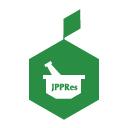Article,
Potentially inappropriate medication in elderly patients in Santiago de Cuba
Journal of Pharmacy & Pharmacognosy Research, 7 (4): 288-296 (July 2019)
Abstract
Context: Several studies have reported the high use of inappropriate medication in the elderly, as well as the associated risks; for this reason, it has become a major health problem.
Aim: To characterize the use of potentially inappropriate medication in the elderly based on the reality observed in Santiago de Cuba.
Methods: A descriptive cross-sectional study was carried out, with a random selection that included elderly patients from the community and institutional care in Santiago de Cuba. The data were obtained by reviewing medical records and interviews with patients/caregivers. The potentially inappropriate medication was identified through the Beer’s Criteria and the Screening Tool of Older Person’s Prescriptions/ Screening Tool to Alert doctors to Right; i.e., appropriate indicated treatment.
Results: There were detected 895 potentially inappropriate medications in 632 patients, which affected 81.01% of them, for an average of 1.41 problems per patient. The predominantly inappropriate medication was independent of the diagnosis, which represented 61.7% of the total detected. The most commonly used drugs or groups of drugs were oral hypoglycemic agents, β-blockers, platelet antiaggregants, psychotropic drugs, inhibitors of angiotensin converting enzyme, nifedipine, digoxin, and non-steroidal anti-inflammatory.
Conclusions: There is a high use of potentially inappropriate medication in the elderly, in the health context of Santiago de Cuba, which may be an expression of the limited attention to health needs related to the use of medications in these patients.
